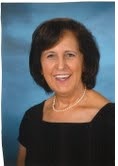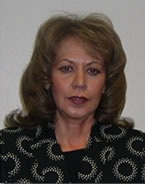|

Elva R. Mellor
|
|

María G. Ramírez |
The Common Core State Standards (CCSS) raise the bar for
K–12 students in order to equip all pupils with college and career
skills and knowledge (National Governors Association Center for Best
Practices, Council of Chief State School Officers, 2010). Although the
new English language arts standards are laudable, the new writing
requirement for English language learners (ELLs) is particularly
complex. This requirement also proves challenging to native English
speakers because the new writing standards move beyond opinion writing
to asking students from first grade on to demonstrate understanding and
application of three main types of writing: opinion,
informative/explanatory, and narrative. To fully comprehend the impact
of the new English language arts standards of the CCSS, it is necessary
to understand how the Common Core State Standards are different from
previous standards, what teachers need to absorb, and sample activities
for implementation.
The CCSS are designed to make educational standards consistent
across the United States and set minimum English language arts,
mathematics, and science benchmarks at each grade level. Currently, 45
states have adopted the standards endorsed by the National Education
Association, the American Federation of Teachers, the National Council
of Teachers of Mathematics, and the National Council of Teachers of
English. This article focuses on the writing standards and the
instructional application for ELLs, native English speakers, and their
teachers.
Imagine you are a first-grade teacher with a combined classroom
of native English speakers and ELLs. You need to teach opinion,
informative/explanatory, and narrative writing to all students. Not all
of the native English speakers possess the same oral language skills,
and the ELLs’ command of oral English may vary from no language
proficiency to minimal oral language skills. Nonetheless, the new
writing standards do not differentiate between these distinctively
disparate groups of first graders. Where do you begin?
The first step is to identify the foundational knowledge needed
for all students to reach the new writing standards. It is important to
keep in mind that writing requires the mastery of many discrete skills
which must be applied in an integrated manner: understanding, using, and
distinguishing between the spoken and written language; reading with
meaning; general and specialized vocabulary knowledge; knowing and
applying standard conventions of spelling, grammar, and writing to the
written text. Equally relevant, some native English speakers may have
the same academic literacy disadvantage as ELLs regarding many of these
skills. First graders, whether native English speakers or ELLs, will
share some basic language needs: oral language skills associated with
listening and speaking, academic literacy vocabulary knowledge, and
emergent written language skills related to reading and writing. That
said, ELLs will be at a distinct disadvantage if they are novice-level
students possessing little or no English language proficiency. Although
ELLs may be able to respond orally in their primary language, they will
need to attain English proficiency comparable to their
native-English-speaking counterparts. The instructional implications are
enormous for all students but especially daunting for ELLs and their
teachers.
The new CCSS writing standards call for communication,
collaboration, critical thinking, and creativity, referred to as the 4Cs
and embedded in the habits of mind. Basically, the
4Cs ask teachers to integrate intrapersonal skills of
communication and collaboration with cognitive
skills of critical thinking and creativity throughout
instruction (National Governors Association Center for Best Practices,
Council of Chief State School Officers, 2010). This requires a
pedagogical shift on many levels. The first C, communication, asks teachers to recognize the
importance of direct explicit instruction in listening and speaking
activities preceding reading and writing instruction. Although it can be
said that listening and speaking occur naturally in the classroom, the
teacher is being asked to plan, implement, and evaluate listening and
speaking activities, not just for ELLs but for native English speakers
as well. The next C, collaboration, mandates that all
students, whether native English speakers or ELLs, engage in
collaborative instructional activities. ELLs may no longer be pulled
aside or pulled out for instructional purposes. All students must work
collaboratively for the purpose of achieving the next two Cs: critical thinking and creativity.
The new writing standards ask first graders to demonstrate
varying genres of writing. In opinion writing,
students are asked to support opinions of substantive topics or texts
using valid reasoning and relevant and sufficient evidence
(CCSS.ELA-Literacy.W.1.1). Informative/explanatory
writing requires students to examine and convey ideas and
information clearly and accurately through effective selection,
organization, and presentation of facts (CCSS.ELA-Literacy.W.1.2). Narrative writing necessitates using temporal words,
well-chosen details, and well-structured sequences based on real or
imagined experiences or events (CCSS.ELA-Literacy.W.1.3). Each type of
writing requires students to understand and respond to written text by
making differentiated responses tied to the purpose of the writing
assignment. The new writing standards expect first-grade students to
demonstrate writing skills once reserved for upper elementary or middle
school students. The writing assignment demands oral language knowledge comprising intrapersonal skills (communication and collaboration) and cognitive skills (critical thinking and creativity) commensurate with written English language knowledge and skills. The new writing standards invite students
to do much more than write. Students need to be able to communicate
with each other in a collaborative manner while exhibiting elements of
critical thinking and creativity in their speaking and writing. All
students, both native English speakers and ELLs, must achieve the same
benchmark of the writing standards.
Integrating the 4Cs
The CCSS call for communication, collaboration, critical
thinking, and creativity. The following lesson guideline illustrates how
teachers can assist students’ development of intrapersonal and
cognitive skills required in the new writing standards, alongside
collaboration, critical thinking, and creativity in their speaking and
writing.
Favorite Apple 1. Bring in a variety of six different types of apples. Set up two different apples per team to evaluate.
2. Each team will evaluate each apple by examining how it
looks, smells, feels, tastes, and sounds when bitten.
3. Everyone must agree in order to write their opinions.
4. Decide as a team which apple you prefer and why, using a graphic organizer like the one below:
|
Apple: |
Apple: |
|
Looks: |
Looks: |
|
Smells: |
Smells: |
|
Feels: |
Feels: |
|
Tastes: |
Tastes: |
|
Sounds: |
Sounds: |
|
Conclusion: |
Conclusion: |
5. Write using these types of sentences:
We think/believe that the ______ apple is better than the ______ apple. The reasons it is better are ______.
6. Remember to have a conclusion and a recommendation. You may
illustrate your writing when you finish doing so. Remember to edit and
revise your writing using the rubric below.
Writing Rubric
- Title
- Topic sentence—your opinion
- Reasons for your opinion
- Transition words: first, second, third, next, then, also, finally
- Conclusion
7. Be ready to read your report to the class.
Student Writing Format
Our opinion on the best apple
Today we studied two different types of apples.
The two apples we studied were ______ and ______.
We think that the ______ apple was better than the ______ apple. The reasons it is better are:
First …
Then …
Also …
Finally …
In conclusion …
We recommend this apple because …
While the students work, note areas requiring more practice, a
mini-lesson, a compliment, or other special assistance. Notice sentence
structures, spelling, word choice, and active participation.
After the teams give their reports, all students are asked to
write about their own personal preference. Interesting findings may
include one choosing a different apple, following the format without
having their own copy, or using more and varied adjectives.
Summary
The activity described here propels students to integrate
listening, speaking, reading, and writing through the application of the
CCSS 4Cs: communication, collaboration, critical thinking, and
creativity. With each step, the students practice listening as they hear
others’ opinions; negotiate meaning by asking and answering questions
on what was heard, which requires that they focus on each speaker;
practice speaking as they express their opinions and ideas and interact
with members of their team; practice reading fluently as they read their
opinion statements, conclusions, and report; practice writing
independently and collaboratively as they edit and revise their work and
finally practice collaborative interaction with others and with the
written text.
In summary, writing deserves to be read, heard, and valued. The
new writing standards blend the intrapersonal skills of communication
and collaboration with the cognitive skills of critical thinking and
creativity to support and foster the English language arts capacities of
all students.
Reference
National Governors Association Center for Best Practices,
Council of Chief State School Officers. (2010). Common core
state standards. Washington, DC: Author.
Elva R. Mellor is an internationally known educator
in bilingual education, dual language instruction, ESL, reading, and
parent education. She has an MA in supervision and curriculum and
specialized training in ELD and SDAIE, cooperative learning, and
standards-based teaching. Her experience includes curriculum
coordinator, principal, teacher, supervisor, and adjunct instructor. She
has authored several ESL curriculum books and has presented at local,
state, national, and international conferences, such as TESOL, MEXTESOL,
ANUPI, NABE, and CABE.
María G. Ramírez has served on numerous boards,
provided reports to governmental agencies and school districts,
delivered papers at professional meetings, served as the primary
investigator of state and federally funded grants, contributed to
journals, and coauthored ESL curriculum books, but the establishment of a
bilingual education endorsement in Nevada remains the accomplishment
that best characterizes her lifelong commitment to the education of
culturally and linguistically diverse students. |

